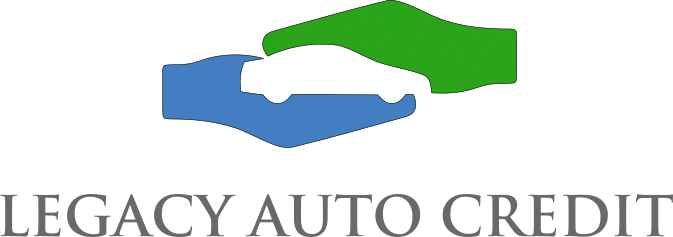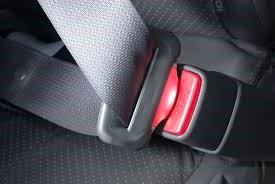Research shows that seat belts and child car seats protect adults and children from serious injuries in car accidents by more than 60 per cent. There are Ontario seat belt and child car seat laws in place to make sure you and your children are properly wearing your seat belt and your children are in the proper car seat for their age, weight and height so they can stay safe in the event of a collision.
We will go over everything you need to know from seat belt laws and proper ways to wear them, to car seat and booster seat laws. We will also go over things to keep in mind, so you keep you and your family comfy and safe as you drive.
Facts
A Study has shown that during the 2017 year in Ontario 54 Children and young adults between the ages of 0-19 were killed and 140 Children and young adults were seriously injured while not wearing a seat belt. Here are some examples of vehicle speeds in accidents.
- 50 km per hour is like falling from a 4-story building
- 75 km per hour is like falling from an 8-story building
- 100 km per hour is like falling from a 14-story building
Evidence has shown that Ontario’s seat belt laws have worked and have helped strengthen our road safety record.
Seat Belt Rules, Tips and Fines
Throughout the years research has shown the importance of protecting yourself and loved ones in your vehicle. Lawmakers have made a point in ensuring these safety requirements are taken seriously and followed. Drivers will now face a fine between $200.00 and $1000.00 per person in the vehicle under the age of 16 without a proper seat belt or car seat plus lose 2 demerit points on their license. Passengers over the age of 16 are responsible to buckle up themselves and if pulled over without wearing a seatbelt could face a fine. You may also receive a fine if all your seatbelts are not functional even without passengers.
Throughout the year’s vehicles have become safer for drivers and passengers, especially with the introduction of airbags. What some people don’t realize is that air bags DO NOT take the place of seatbelts. Air bags will not prevent you or your passengers from being thrown out of your vehicle. Airbags also cause concern for the safety of children under the age of 13 when deployed while children are in the front seat. If you have no other option but to have a child sit in the front seat, make sure the airbag is disabled. If you are unsure on how to do that visit Transport Canada for more information on their deactivation program.
https://www.tc.gc.ca/en/services/road/publications/tp-tp13178-menu-124.htm
Seat belt Tips
- DO wear your seat belt so that it crosses your chest and your lower hips. This is because those areas of your body are able to resist the force of a crash.
- DO NOT wear any part of your seat belt twisted, a twisted seat belt will not spread the force of a crash across your body to protect you properly.
- DO NOT put the shoulder strap under your arm or behind your back, as again stated the belt across your body protects from the force of the crash.
Car Seats and Booster Seats
Ontario’s Highway traffic act requires any child under the age of 8 years old to use a car seat or booster seat while in a motor vehicle. When purchasing a child seat always look for the National Safety Mark label on the seat. All car seats and boosters have a useful life date and be sure to never use one that has passed that date.
Rear facing child car seats are mandated by the Ontario Highway Traffic Act for any child under 20 pounds. The best practice is to keep children in rear facing car seats until they reach the manufacturer’s recommended maximum weight and height. Some rear facing child car seats are made for children up to 45 pounds.
Forward facing child car seats are mandated by the Ontario Highway Traffic Act for any child weighing 20 Lbs. to 40 Lbs. but the best practice is to follow the manufacturer’s recommended maximum weight and height limits. A forward-facing child car seat uses a tether strap to prevent the car seat from moving forward and causing injury in a collision. It is imperative to use the tether as the manufacturer recommends.
Booster seats are mandated by the Ontario Highway Traffic Act for any child weighing 40Lbs to 80Lbs standing less than 4.9 feet and who are under 8 years old. It’s best to follow the manufacturer’s recommended maximum weight and height. Booster seats protect children from serious injury 3.5 times better than a seat belt on its own.
Buying and using the proper child car seat is not all you need to do, properly installing the seat can save your child’s life. The Ministry of Transportation has a website dedicated to the proper installation of all front and rear facing child car seats.
http://www.mto.gov.on.ca/english/safety/install-child-car-seat.shtml
If you are still unsure how to install your child car seat properly you can look for a Child Car Seat clinic in your community.
A child car seat clinic is an opportunity for you to learn from a trained child car seat technician:
- which seat is appropriate for your child
- how to correctly install your child car seat in your vehicle
- how to position your child in the child car seat
There is no national network of car seat clinics, but sessions are held across Canada by a variety of organizations. Provinces and territories regulate the use of child car seats within their borders. Your local police or fire department may have information about child car seat clinics in your area or they may help you with the proper install of your child car seat if no clinic is available.

